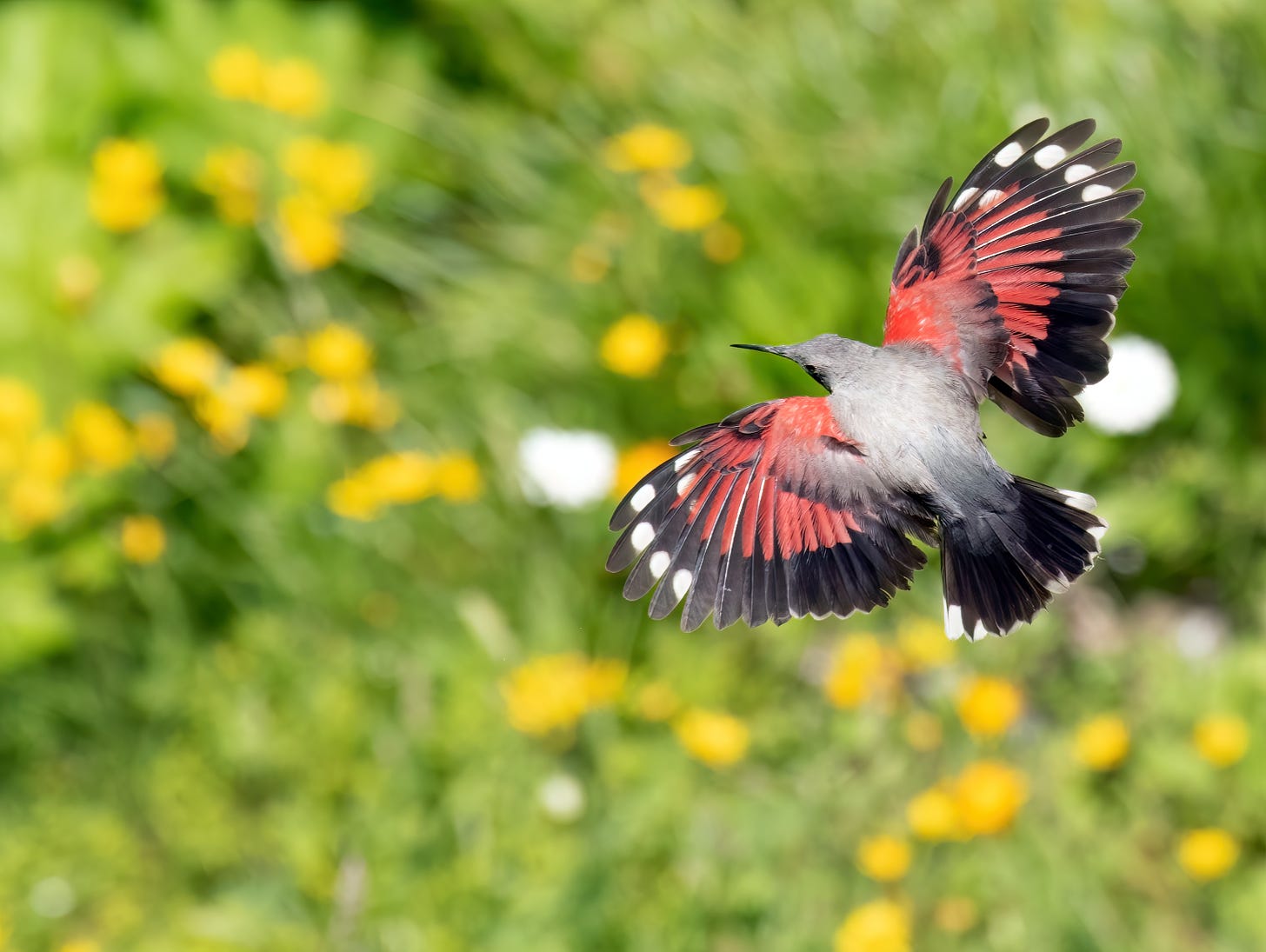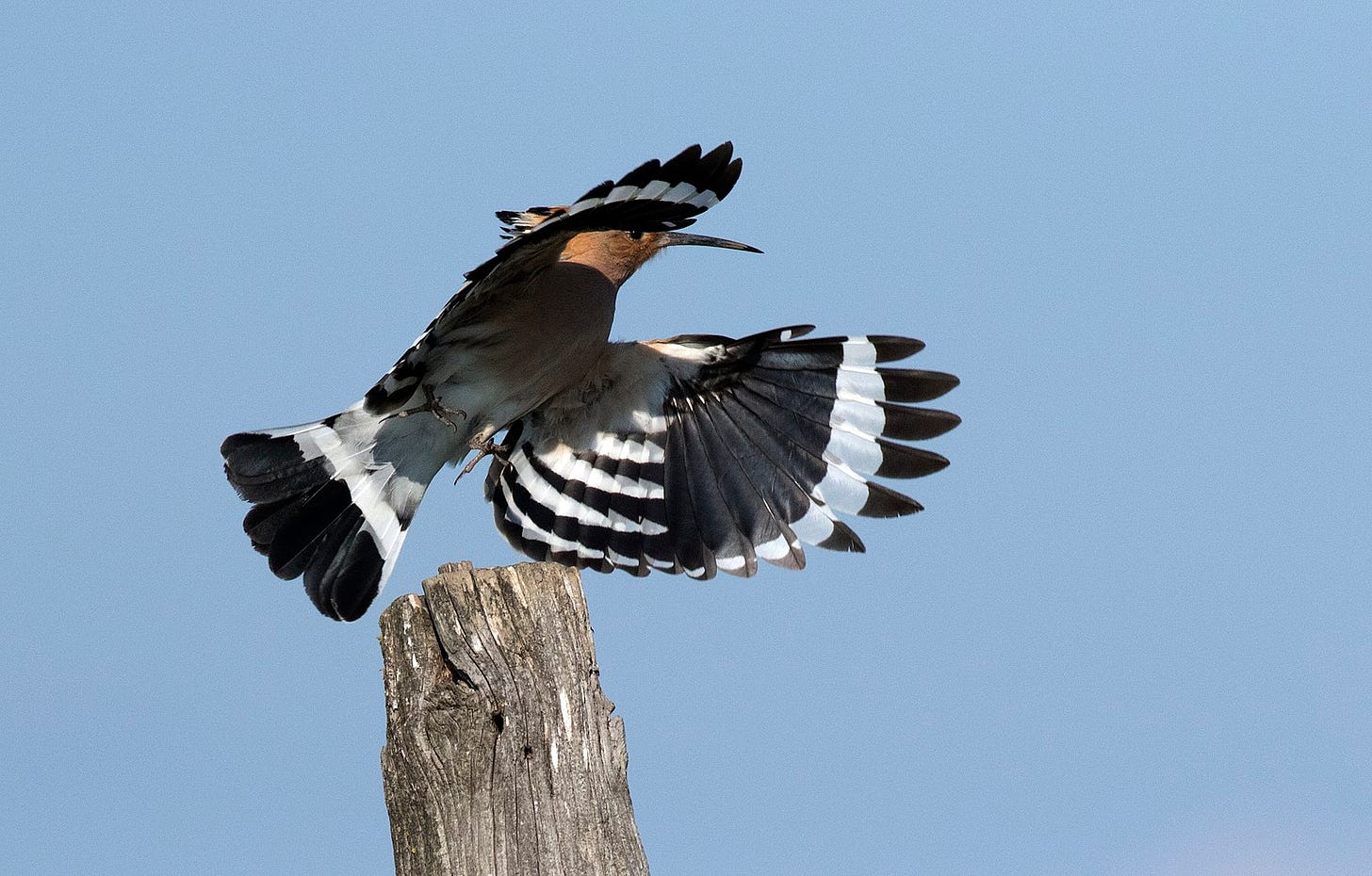This is the third of the mid-weekly posts sent to all those on the Birds list. If birds aren’t your thing, you can unsubscribe from these posts by going to the manage your subscription page. But do have a read anyway – you might find that birds are, after all, your thing. And if they are especially your thing, you can upgrade for £4 a month to access the second half of these emails.
Right, that’s the selling over with. On with the birds. Thanks for reading. Oh, and sorry there’s no reading this week (as there wasn’t last week). Ran out of time. Next week, I promise.
Bucket Bird
“What’s your ultimate bucket list bird?”
It’s a question, or some variation of it, I get asked a lot. And yet for some reason I’m always surprised by it, to the extent that I never have a ready answer. In such situations my mind jumps to the obvious, the world’s glamour birds: Resplendent Quetzal, Emperor Penguin, frogmouths, potoos, Hoatzin, Wandering Albatross, Shoebill, Magnificent Frigatebird, Secretarybird, Harpy eagle, Kākāpō, King-of-Saxony Bird-of-Paradise, ALL THE HUMMINGBIRDS.
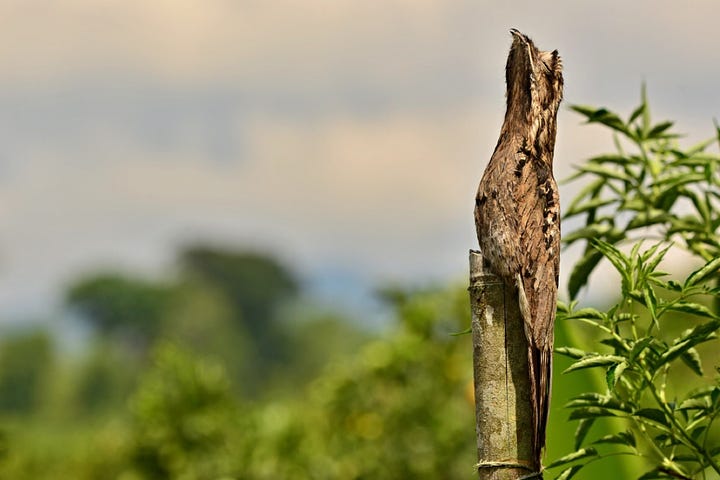

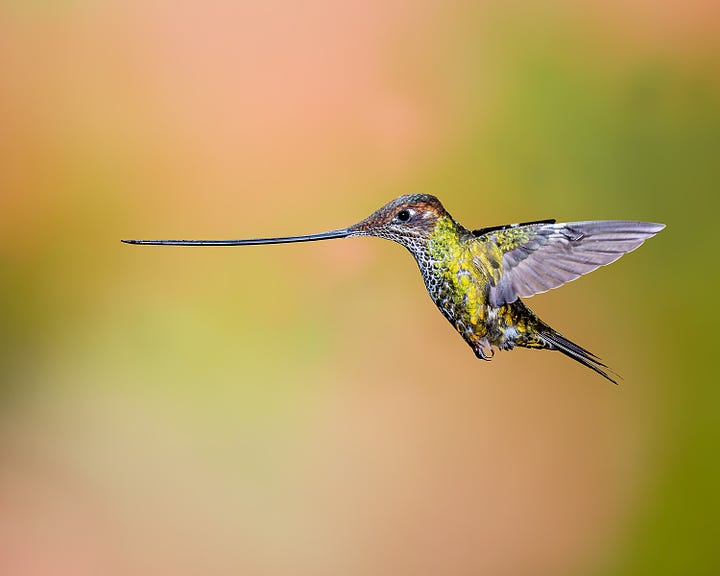
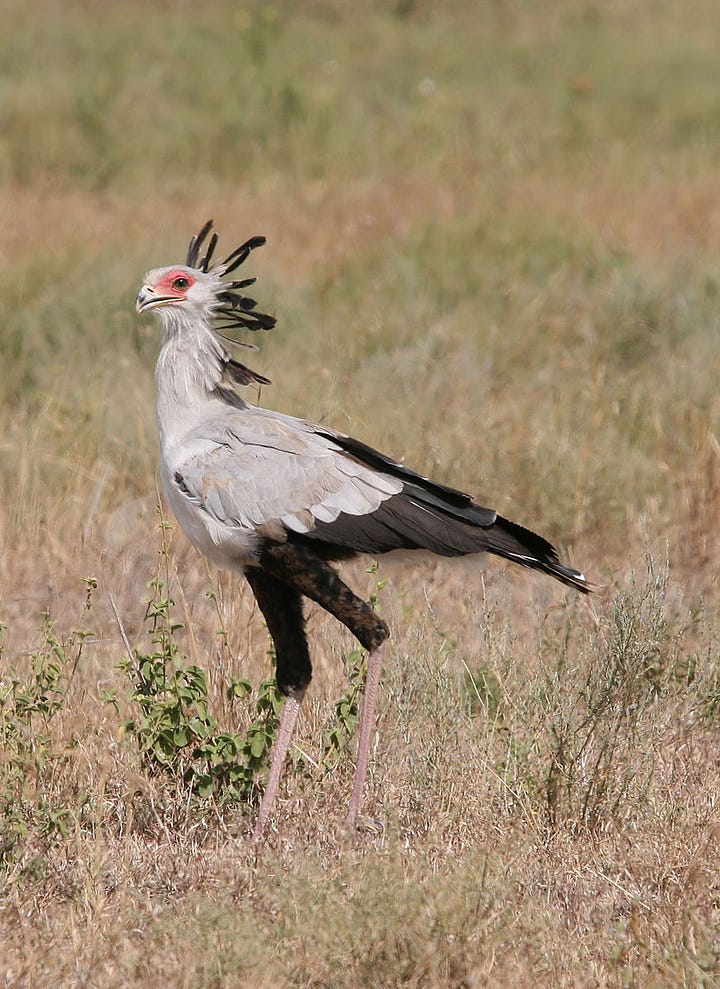
I never remember the Wallcreeper.
Perhaps it’s because they’re not exotic – at least not in the same way as the impossibly distant birds listed above. To a British birder, a Shoebill is like a camel – so far removed from the birds of your experience as to be almost not a bird.
Not so, the Wallcreeper. It’s a familiar shape – like a cross between a Nuthatch and a Hoopoe, perhaps – and not immediately striking. Small and grey, all the better for evading detection on the sheer rock faces it calls home, where it probes crevices and fissures with its slightly downcurved bill, looking for insects. Agile, nimble, darting. A busy bird.
In flight it shows the streak of red-pink (this feels like an amateur’s way of describing the colour, but colour-naming is not my natural milieu. Hang on a minute… OK, I’m looking at a colour chart now and I think the closest equivalent I can find is ‘amaranth’. )
So, appropriately equipped, let’s go again.
In flight it shows the streak of amaranth that is a large part of the attraction. A startling, eye-catching colour.
Flash. There it is.
They’re broad, too, those wings. We get used to a certain sense of proportion in our everyday birds. It’s not that they all look the same – anything but – so much as there are certain shapes we associate with them. So when you get an outlier, you notice. And in flight a Wallcreeper gives the impression of being all wings, their proportions giving it the nickname 'the Hoopoe of the rock face'.
Here, for the sake of comparison (as if I ever needed an excuse to share a photograph of a Hoopoe), is a Hoopoe.
I describe the Wallcreeper with some semblance of authority, but, as I think I’ve mentioned, I’ve never seen one. This is, at least in part, down to fecklessness on my part. Wallcreepers are elusive but not impossible to find. There are plenty in Europe if you go to the right place and get lucky. The trouble is, from my point of view, that the right place is often between 1000 and 3000 metres up and clinging to a rock face – a habitat, I have to admit, to which I’m not personally attracted. The likelihood of my ascending the right kind of mountain to the right kind of height to see a wallcreeper skipping across the rockface and foraging for insects remains slim.
But the good news is that they’re fond of a city break, descending from their mountainous homes out of the breeding season and eking out a living on a suitable large building – a cathedral, perhaps.
So there’s my next Bucket Bird. One day, one day…
Meanwhile, I can make do with videos like this one.
A couple of weeks ago I complained about the lack of birds in War & Peace (I’ve since found two fleeting references, and as I’ve only reached page 145 of over 1300 I’m hopeful there might yet be a couple more). There are no such problems with Nell Zink’s The Wallcreeper.
Now, I’m the kind of person who will buy a bottle of wine if it has a picture of a bird on it, without even thinking of cost or quality, so a novel (a pleasingly slim novel, at that) named after one of the very best birds of all was a no-brainer. And it is an excellent read – funny, exciting, and at times really quite strange – for birders and non-birders alike.
Opinions
Every couple of months The Guardian lets me write about birds, which is very nice of them. The most recent missive concerned parakeets. You can find it here.
I learned something that day. I learned that when it comes to parakeets, people have Opinions.
These Opinions break down, broadly, into two camps:
Parakeets are beautiful creatures and bring a welcome splash of colour. Watch them, love them, cherish them.
Parakeets are squawking hooligans fit for little more than universal revulsion and disgust. Shoot them, kill them, eat them.
The Guardian published a letter in response to the piece which sits very firmly in Camp 2.
And to think that when I started out in Nature Writing™ I thought it would be nice and uncontroversial.
Thanks for reading. That might well be quite enough bird talk for you. If it isn’t, below the fold this week there’s a story of an uncommon bird in slightly unlikely surroundings.
Keep reading with a 7-day free trial
Subscribe to Six Things to keep reading this post and get 7 days of free access to the full post archives.




